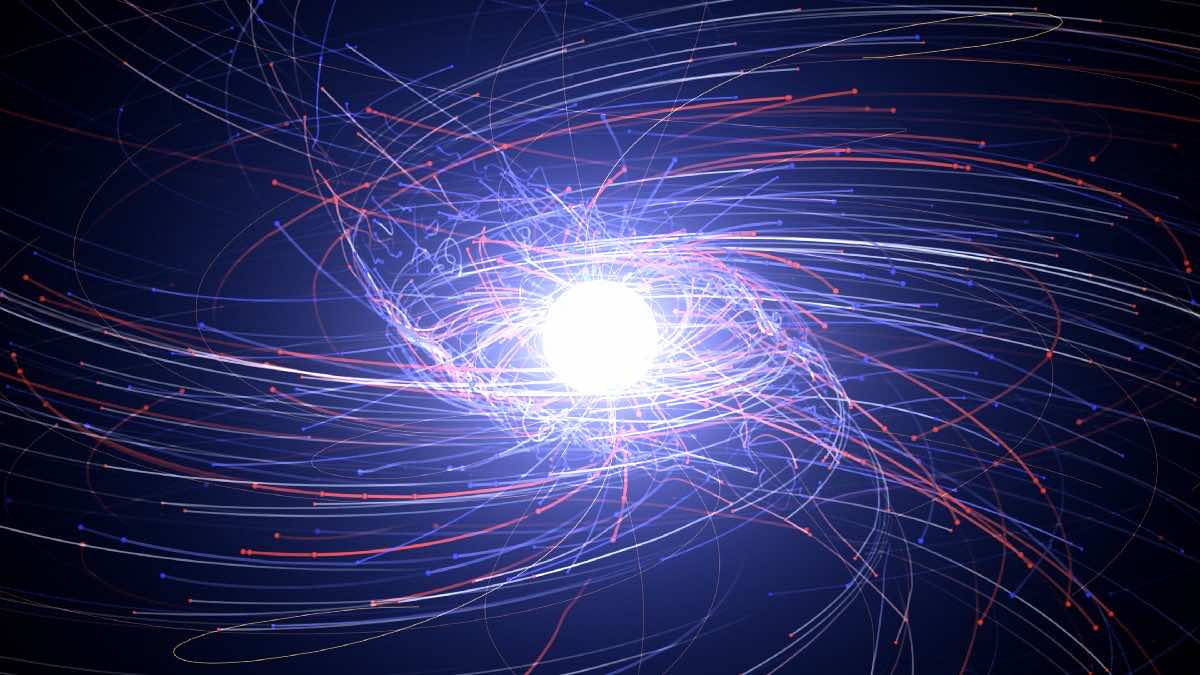
You wouldn’t be able to tell the difference just by weighing them. So (as you said) everything is the opposite except for mass.įraser: So, you take an atom of antimatter, put it on your anti-atomic scale (so it doesn’t explode) and it’s still going to weigh the same amount. We’re able to sort out one from the other based on how they get spun, how they get rotated in circular corkscrew-shaped paths as they go through magnetic fields.įraser: Okay. Depending on if you have an electron or a positron, you end up with things spinning in one direction or the other. When you send a charged particle through a magnetic field, it can end up spiralling if you send it in the correct direction. Which means its mass stays the same but it’s now positively charged. Here you have an electron that, instead of being a normal matter electron it’s an antimatter electron. We’ve given those the name positron, because when we first found them we were still trying to figure out what they were.įraser: So once again, these are like electrons except they behave like lightweight protons. Along with having antiprotons, we also have anti-electrons. That’s kind of how they were first discovered. Pamela: It would behave like an overweight/obese electron, because protons weigh a lot more. It wouldn’t behave like a proton, it would behave like an electron, I guess? If you moved an antiproton through a magnetic field, it would behave in the exact same way something that was negatively charged would.

With protons we’re mostly worried about charge (which ends up being negative).įraser: I know from my physics classes, a proton having a positive charge means you can move it through a magnetic field and affect it. It would have the same mass but a negative charge, its magnetic quantum number would be opposite, if it was orbiting its orbital quantum number would be opposite, all of its quantum numbers would be the opposite.

Pamela: Instead of having a proton in the centre, it would have an antiproton in the centre, which would have a negative charge. How would it be different from an atom of regular matter? It’s kind of cool, kind of destructive, and kind of mysterious (which makes it fun to talk about).įraser: When you say everything is reversed, can you give me some examples? Lets say I’ve got an atom of antimatter. Because of this, it has the ability to find its normal partner and annihilate in rather dramatic ways that create gamma rays. It is actually just normal, everyday stuff that has its charge reversed and in fact, all of its quantum numbers are reversed. It is not some weird, “going to destroy the universe because one particle of it comes into existenceâ€? stuff. Pamela Gay: Well, antimatter does not have negative mass. So Pamela, what is – or should I say, what isn’t – antimatter?ĭr. We’ve gotten so many questions from listeners in just the last week about antimatter that our show had just been chosen for it. So many threads come together at the same time driving the decision for us. Fraser Cain: Sometimes, we don’t get to decide what our show’s about.


 0 kommentar(er)
0 kommentar(er)
